Quick Look at Core M 5Y70 and Llama Mountain
by Joshua Ho on September 10, 2014 2:36 PM EST
Today, Intel showed off a reference design codenamed Llama Mountain, which is an incredibly thin tablet running Intel's Core M 5Y70. While we've covered Core M previously it's worth going over again for those unfamiliar with this chip. For reference, it's the first shipping implementation of Broadwell and designed to target a 4.5W TDP. This means that it's fully possible to integrate a full Windows PC into a thin, fanless formfactor. We've already seen the announcement of the ThinkPad Helix 2 with Core M, so it's clear that this new chip can support such formfactors.
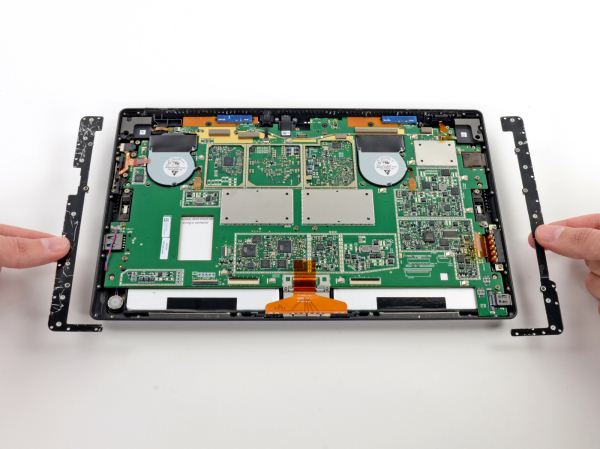
One of the biggest surprises for me was how much smaller the PCB was in Llama Mountain. For reference, the photo above is from our Surface Pro teardown. The PCB takes up almost the entirety of the tablet, and there's a great deal of extra thickness from the fans in the device. I managed to get a photo of the entire Llama Mountain board below. The second green PCB contains the storage (a SanDisk iSSD solution) and a WiFi chip (Intel 7260AC).
The resulting tablet is incredibly light at 684 grams. For reference, the iPad Air is 469 grams. Of course, the real question is whether the extra ~200 grams is worth it. To get an idea of whether or not it is, Intel showed the performance of Llama Mountain in Sunspider 1.0.2 and 3DMark Ice Storm Unlimited. I've put the results into the graphs below.
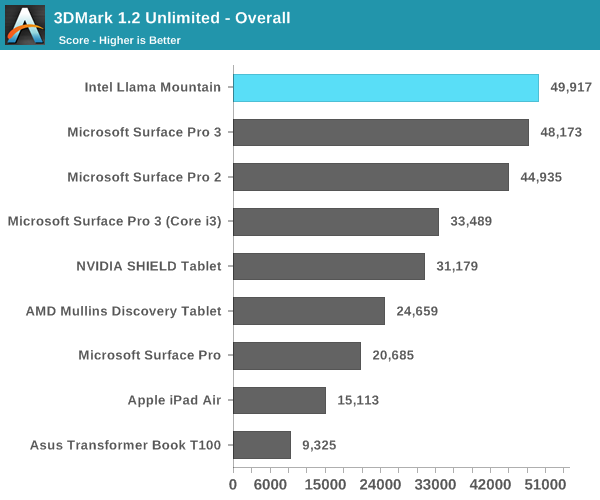
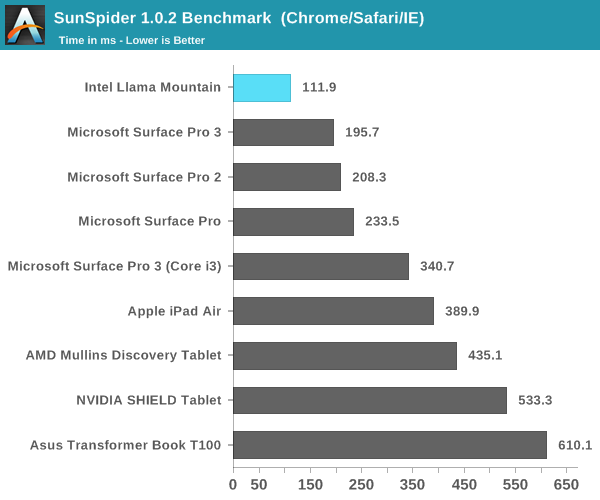
Needless to say, the Core M 5Y70 is the fastest tablet that we have test results for. The Surface Pro line has 15W TDP parts, while Core M operates in a 4.5W TDP. However, for this reference design Intel is leveraging the large amount of surface area to drive a 6W TDP. Despite this, it seems that it manages to equal or better the Surface Pro line in performance. Intel also emphasized that only an aluminum back cover would be needed to dissipate the heat to keep costs down. In fact, there were versions of Llama Mountain with copper and gold-plated back covers, but had no noticeable effect in performance. I'm definitely looking forward to future tablets and 2-in-1 devices launching with this chip, as this could enable laptop levels of performance in a tablet formfactor without the compromise we see now.


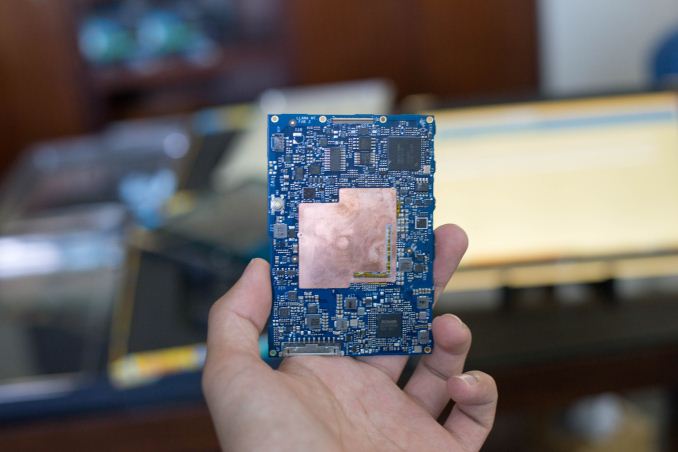
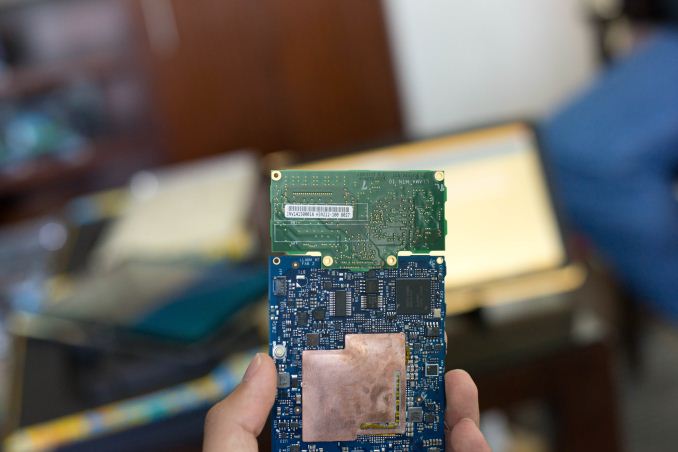









81 Comments
View All Comments
Stochastic - Wednesday, September 10, 2014 - link
I don't think this chip will be able to sustain that performance in the chassis it's going to ship in. I expect there to be quite a bit of thermal throttling for extended high-performance use cases.Spunjji - Thursday, September 11, 2014 - link
We definitely can't eliminate that possibility as these graphs also show the Surface Pro 3 results as better than the Pro 2 in 3DMark; this is patently untrue in extended real-world use so we can conclude that 3D mark is probably not sufficient to induce extended-use throttling.fokka - Wednesday, September 10, 2014 - link
i'm really wondering at what TDP and clocks this thing ran during the benchmarks.Wilco1 - Wednesday, September 10, 2014 - link
Yes, it's unlikely it was 4.5W since most Intel CPUs can run at 125% or more of their official TDP for some time. Also as others noted it is way too fast to be true on SunSpider, so this is obviously due to the usual browser differences and tricks (unlike the other results the 5Y50 scores are provided by Intel). People will be quite disappointed when the actual CPUs become available as they of course won't be twice as fast as Surface Pro!frostyfiredude - Wednesday, September 10, 2014 - link
Speculating here: Core M was ran on IE11, other Surfaces in Chrome. I get 115ms with my SP2 in IE11. For a quick test, being a hair faster than a 4200U based device makes sense as they turbo to the same frequency so the few percent better IPC will pull it ahead.OrphanageExplosion - Wednesday, September 10, 2014 - link
Thanks for the data - yes, like-for-like is kinda important...Krysto - Wednesday, September 10, 2014 - link
Isn't that the "higher end" version of Core M? Doesn't it mean it uses more than 4.5W TDP then?JDG1980 - Wednesday, September 10, 2014 - link
So when can we expect the fanless Surface Pro 4?mkozakewich - Wednesday, September 10, 2014 - link
Wow. Just wow. I'd been thinking of the Surface Pro 4, and I assumed it would be like having the current i3 at the current i5's performance (plus a little).Maybe they actually *can* redo the chassis again to make it fanless?
(As a buyer of the original Surface Pro, I'm kinda eyeing the market, and this might be the difference between buying in February and buying in October.)
evilspoons - Wednesday, September 10, 2014 - link
Good thing I bought the replacement warranty on my Surface Pro 3. I might have to "accidentally" break it when these show up in a revised SP3 or a SP4. Holy crap.